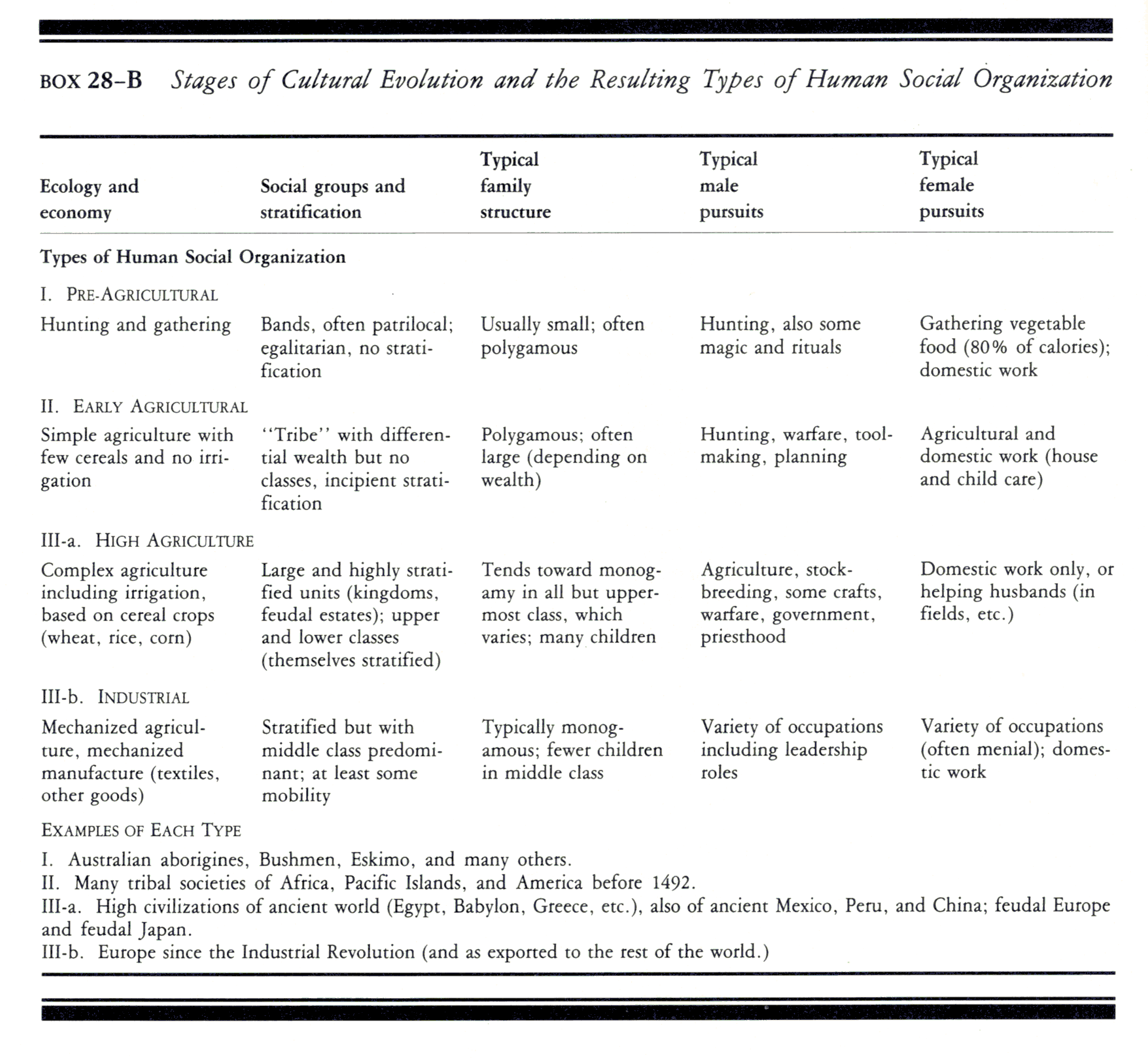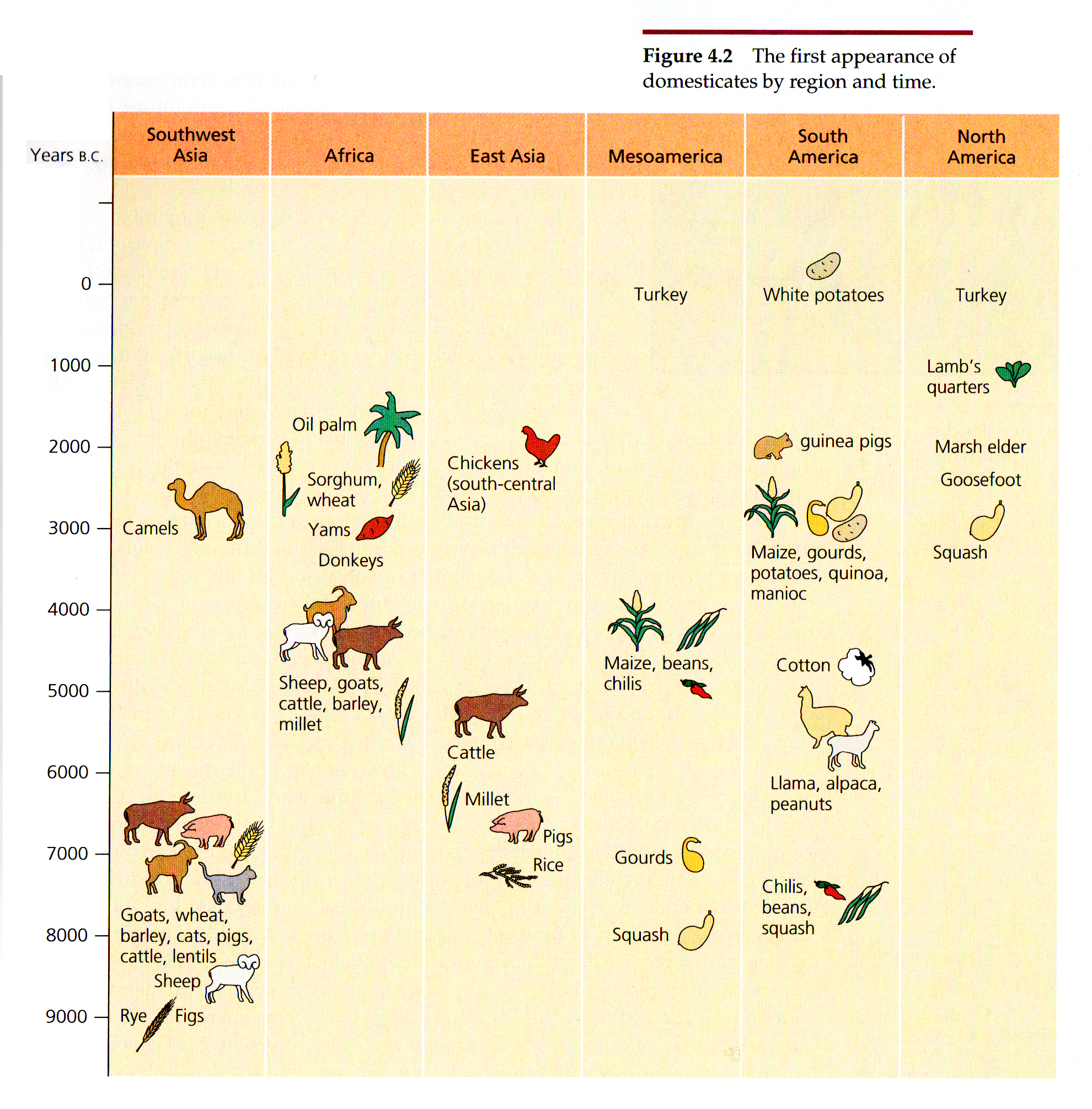NEOLITHIC REVOLUTION (origin of agriculture)— important changes:
- Planting of cereal grains
- Village settlements
- Grinding of grass seeds (cereal grains)
- Tools with ground (rather than chipped or flaked) edges
- Water-tight baskets
- Canoes and other water craft
- Clay pottery
- Baking
- More varied tasks and crafts
- Grain storage; granaries with raised floors and waterproof roofs
|
- Discovery of fermentation and alcoholic beverages
- Ownership of agricultural fields; fence-building
- Domestication of animals (esp. large ungulates)
- Increased attention to seasons (for planting, harvesting, etc.)
- Increasing interest in controlled pollination and crop reproduction
- Increasing interest in control of human reproduction
- Comparisons of human, animal, and crop reproduction
- Standards of morality become more strict
- Emergence of village chiefs and other leadership roles
- In some places: wheeled carts, wheelbarrows
|
URBAN REVOLUTION (intensification of agriculture)— important changes:
- Irrigation (ditches, canals)
- Coerced labor, including slavery
- Racist ideology to justify coercion of others
- Great accumulation of wealth under central control
- Armed guards, soldiers, armies
- Large-scale political rule (roads, trade)
- Social stratification
- Great inequalities of wealth
- Strict group endogamy
- Lower status of most women; dowery customs
- Increased control of reproduction (crops; other people)
|
- Building of cities with palaces, monuments, etc.
- Kings, emperors, pharaohs, often considered divine
- "Benevolent despotism"
- Emergence of priesthood
- Increased attention to seasons, astronomy, calendars, mathematics
- Writing and record-keeping (initially as records of grain storage)
- Emergence of pastoral nomads (and more trade)
- In many places: military use of horses
- In many places: metallurgy, use of iron
- In Greece and elsewhere: fishermen turn to overseas trade
|
|



